Filter books by:
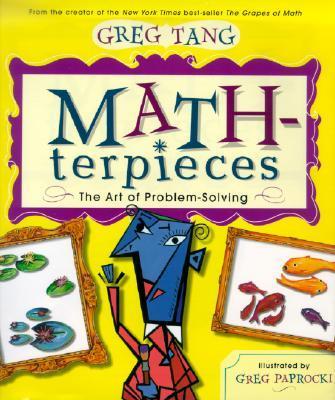
Mathterpieces: The Art of Problem-Solving
Australian Curriculum Year Level
Year 2, Year 3, Foundation Year, Year 1
Maths Concepts
Australian Curriculum: Description
Foundation Year – Subitise small collections of objects (ACMNA003);
Year 1 – Represent and solve simple addition and subtraction problems using a range of strategies including counting on, partitioning, and rearranging parts (ACMNA015);
Year 2 – Describe, continue, and create number patterns resulting from performing addition or subtraction (ACMNA035).
Teaching ideas
Students investigate other situations involving subitising and counting on with and without distractors in routine and non-routine situations. Students could write the number sentences represented by art in this book (representational to abstract).
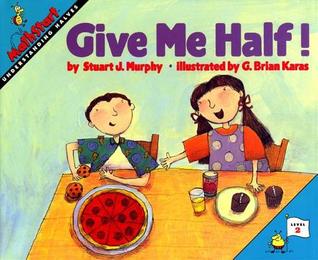
Give Me Half!
Strand
Number
Australian Curriculum Year Level
Year 2, Year 3, Foundation Year, Year 1
Part-Part-Whole
Maths Concepts
Australian Curriculum: Description
This story is about a brother and sister who are asked to share all their food and drink; pizza, cupcakes, drink etc
Teaching ideas
(1) Read the story and describe what's going on in each picture; (2) vocabulary-half, whole, share, divide, divided equally; (3) gather materials (objects, quantities and collections) and discuss how you would halve them; (4) draw pictures of objects in your classroom, and lines to show 'half'
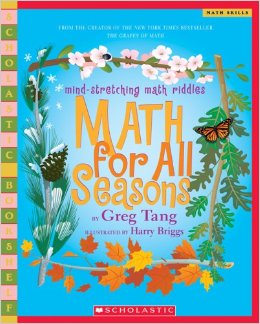
Math for All Seasons
Strand
Number
Australian Curriculum Year Level
Year 2, Year 3, Foundation Year, Year 1
Maths Concepts
Australian Curriculum: Description
This book explores counting up collections of items and objects. The book encourages seeing patterns to make the counting quicker than one-by-one.
Teaching ideas
(1) Prep students can count the objects in the collections within this book; (2) years 1-3 students can be encouraged to 'see the pattern' to help them partition to count up the objects in the quantities quicker; (3) Final pages of the book show the answers using numbers and symbols as well as circles drawn around the collection, year 2s and 3s should be encouraged to set their work out using numbers and symbols
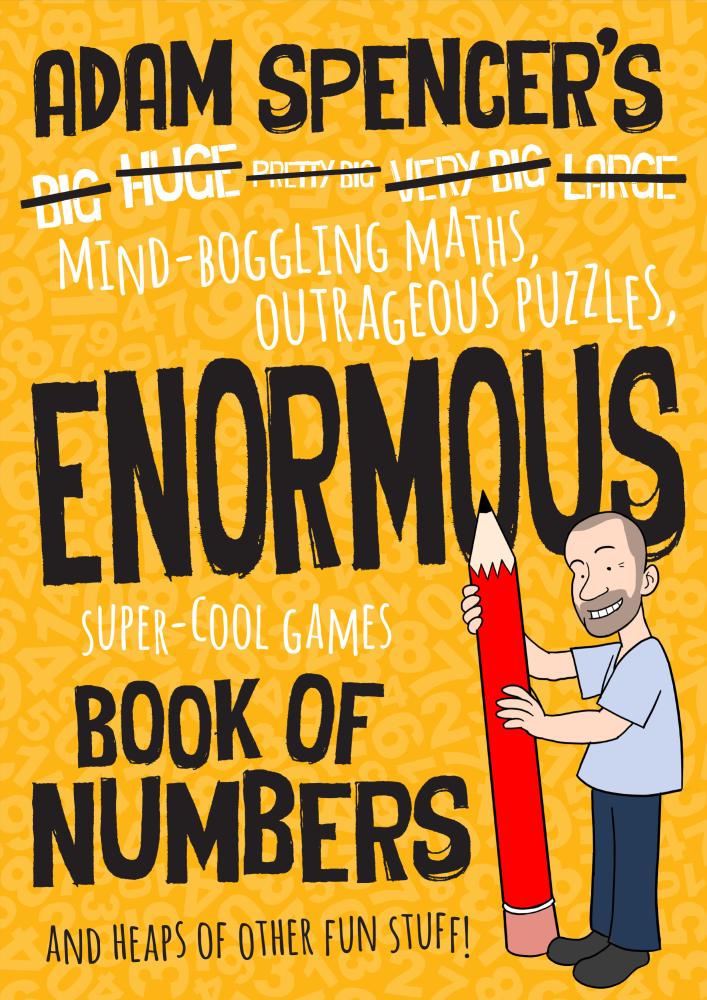
Adam Spencer’s Mind-Boggling Maths, Outrageous Puzzles, Enormous Super-Cool Games Book of Numbers and heaps of other fun stuff!
Strand
Algebra
Australian Curriculum Year Level
Year 5, Year 6, Year 7, Year 2, Year 3, Year 8, Year 4, Foundation Year, Year 1, Year 9
Multiplication and Division Triangle, Part-Part-Whole, Benchmarking, Find the Pattern, Draw what you can't see
Australian Curriculum: Description
Prep-Sort, describe and name familiar two-dimensional shapes and three-dimensional objects in the environment (ACMMG009); YR1-Recognise and classify familiar two-dimensional shapes and three-dimensional objects using obvious features (ACMMG022); YR2-Describe the features of three-dimensional objects (ACMMG043); YR3-Identify symmetry in the environment (ACMMG066); YR4-Investigate number sequences involving multiples of 3, 4, 6, 7, 8, and 9 (ACMNA074); YR5-Use efficient mental and written strategies and apply appropriate digital technologies to solve problems (ACMNA291); YR6-Construct simple prisms and pyramids (ACMMG140); YR7-Draw different views of prisms and solids formed from combinations of prisms (ACMMG161); YR8-Solve a range of problems involving rates and ratios, with and without digital technologies (ACMNA188); YR9-Express numbers in scientific notation (ACMNA210)
Teaching ideas
Real-world application in this book. Cross-curricular links are strong too, science, humanities, music, HPE etc

Matherpieces: The Art of Problem-Solving
Strand
Number
Australian Curriculum Year Level
Year 2, Year 3, Foundation Year, Year 1
Maths Concepts
Australian Curriculum: Description
Subitise small collections of objects (ACMNA003); Represent and solve simple addition and subtraction problems using a range of strategies including counting on, partitioning and rearranging parts (ACMNA015); Describe, continue, and create number patterns resulting from performing addition or subtraction
Teaching ideas
Students investigate other situations involing subitising and counting on with and without distractors in routine and non-routine situations. Students could write the number sentences represented by art in this book (representational to abstract).
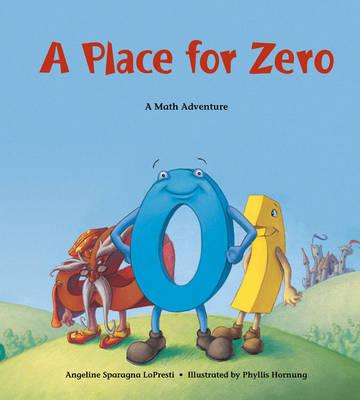
A place for zero
Strand
Number
Australian Curriculum Year Level
Year 2, Year 3, Foundation Year, Year 1
Maths Concepts
Australian Curriculum: Description
Establish understanding of the language and processes of counting by naming numbers in sequences, initially to and from 20, moving from any starting point (ACMNA001); Connect number names, numerals and quantities, including zero, initially up to 10 and then beyond (ACMNA002); Yr1-Recognise, model, read, write and order numbers to at least 100. Locate these numbers on a number line (ACMNA013); Yr2-Recognise, model, represent and order numbers to at least 1000 (ACMNA027); Yr3-Recall multiplication facts of two, three, five and ten and related division facts (ACMNA056)
Teaching ideas
Explore adding numbers up to 10 then beyond and up to 900. Explore adding and multiplying by 0. Conduct some experiments with 'numberator' and 'multi-tube'.
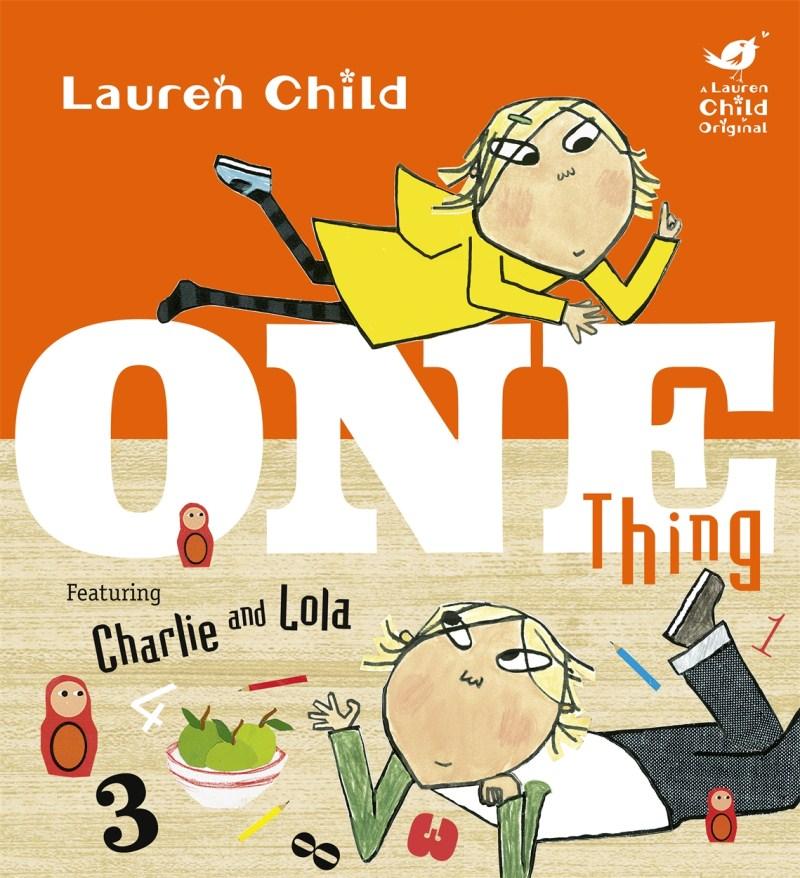
One Thing : featuring Charlie and Lola
Strand
Number
Maths Concepts
Australian Curriculum: Description
F.Y-Connect number names, numerals and quantities, including zero, initially up to 10 and then beyond (ACMNA002); Yr1-Represent and solve simple addition and subtraction problems using a range of strategies including counting on, partitioning and rearranging parts (ACMNA015); Yr2-Explore the connection between addition and subtraction (ACMNA029); Yr3-Recognise, model, represent and order numbers to at least 10 000 (ACMNA052); Yr3-Tell time to the minute and investigate the relationship between units of time (ACMMG062); Yr4-Recognise, represent and order numbers to at least tens of thousands (ACMNA072); Yr5-Convert between units of time (ACMMG085); Yr6-Select and apply efficient mental and written strategies and appropriate digital technologies to solve problems involving all four operations with whole numbers (ACMNA123)
Teaching ideas
Teach other vocabulary that is often used differently in everyday language such as the examples in the book; e.g. "how about no things" meaning 0 things. Explore time and how long the morning routine takes students in the class. Counting and counting on items.
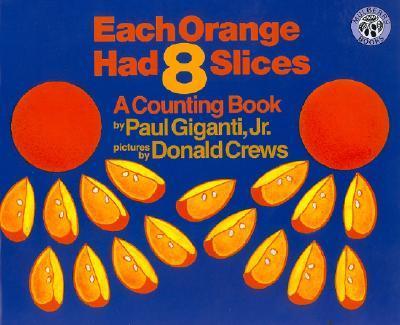
Each Orange Had 8 Slices
Strand
Number
Australian Curriculum Year Level
Year 2, Year 3, Foundation Year, Year 1
Australian Curriculum: Description
F.Y – Establish understanding of the language and processes of counting by naming numbers in sequences, initially to and from 20, moving from any starting point (ACMNA001); F.Y – Represent practical situations to model addition and sharing (ACMNA004); Year 1 – Represent and solve simple addition and subtraction problems using a range of strategies including counting on, partitioning and rearranging parts (ACMNA015); Year 3 – Recall multiplication facts of two, three, five and ten and related division facts (ACMNA056)
Teaching ideas
Build on the concept of counting on, partitioning and part-part-whole with other object sequences.
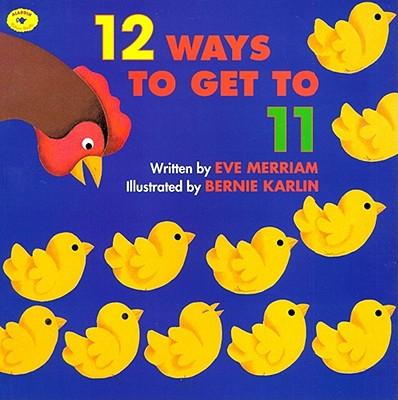
12 Ways to Get to 11
Strand
Number
Australian Curriculum Year Level
Foundation Year, Year 1
Part-Part-Whole
Maths Concepts
Australian Curriculum: Description
F.Y – Establish understanding of the language and processes of counting by naming numbers in sequences, initially to and from 20, moving from any starting point (ACMNA001); F.Y – Represent practical situations to model addition and sharing (ACMNA004); Year 1 – Represent and solve simple addition and subtraction problems using a range of strategies including counting on, partitioning and rearranging parts (ACMNA015)
